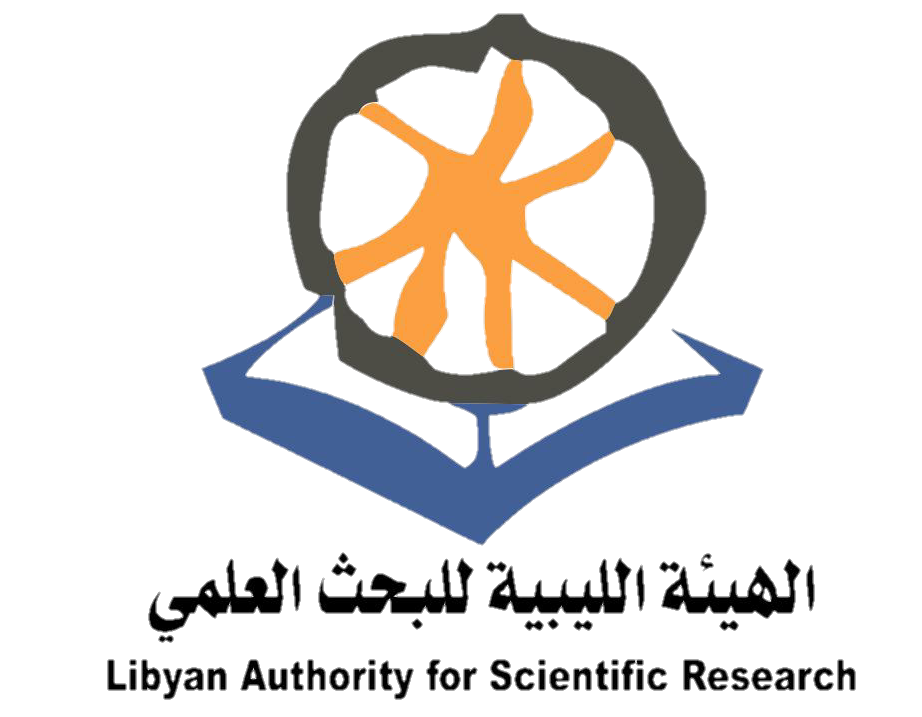Morphological study of Serrasentis sagittifer parasitic infecting the, fishes Mullus barbatus ( Mullidae) from A-khoms coast, Libya
Keywords:
Acanthocephalans,, Serrasentis sagittifer,, Mullus barbtus,, alkuoms Coast,, Libya,, marine fish.Abstract
A total of 120 marine fish as (Mullus barbatus) were collected from The Mediterranean Sea during the period from June 2021 to December 2021; they were dissected and examined for parasitic acanthocephalans. Only 29 (24.16 %) specimens were found to be Infected with Serrasentis sagittifer belonging to family Rhadinorhynchidae.
Infested fishes illustrate no pathognomonic signs except abdominal distension, whereas the infection was recorded in the intestine, pyloric ceca, and the external surfaces of some internal organs of the infected fish. Seasonally, the prevalence of infection was increased to 55.17 % during summer season and decreased to 31.03 and 13.80 % during Autumn and winter respectively.
Light and scanning electron microscopic investigation revealed that the adult worm was elongated (with broad anterior and narrow posterior ends) and measured 5.8–9.7 (6.9 ± 0.2) × 0.52–0.69 (0.58 ± 0.02) mm for male and 10.1–11.3 (10.8 ± 0.2) × 0.68–0.83 (0.72 ± 0.01) mm for female. Proboscis was long and cylindrical with a length of 0.89–1.3 mm (1.1 ± 0.2) for male and 1.11–1.19 mm (1.17 ± 0.02) for female. It was covered with numerous uniform spines arranged longitudinally as 9–11 rows each equipped by 15–18 spines. Spines were triangular, arrow-shaped, strong, and covered with cuticular theca; they decreased in size from the apex to the base of the proboscis. The proboscis was followed by a short spineless neck region followed by the body proper which was supported by multiple combs of spines (16–20) on its ventral surface. It was supported by the morphological data and the presence of trunk spines arranged within rows (comb-like) and the presence of four cement glands in the males. So, according to the records of morphological, the present parasite is classified as Serrasentis sagittifer belonging to class Palaeacanthocephala and family Rhadinorhynchidae with a new host record from the gilthead sea bream Mullus barbtus of the Mediterranean Sea.
References
References
Abdou, N.E., & Mahfouz, M.E. (2006): Ultrastructural and genetic diversity studies of two Sclerocollum (Acanthocephala) sp. Infecting siganid and lutianid fishes from Red Sea, Egypt. J.Egypt. Soc. Parasitol. Dec; 36 (3), 1035-56.
Abo-Esa, F. K. Jihan (2007). Helminth parasites in Barbony Mullus barbatus fish with reference to public health hazards. Egypt. J. Aquat. Biol. & Fish., 11(3): 127- 137.
Abdel-Mawla, I. Heba & Abo-Esa, F. Jihan (2011): The most common parasitic diseases in Siganus revulatus in Suez Canal area. The Egyption Vet. Med. Assoc., 71(1): 257-270.
Abdel-Mawla, I. Heba & El-Ekiaby, T. Walaa, (2012). Some studies on parasitic infection among Morone labrax (Seabass fish) as bio-indicator of environmental conditions. Egyptian Journal for Aquaculture, 2 (3):1-15.
Abdel-Mawla, I. Heba & El-lamie, M. Maather (2018). Investigation of Acanthocephalan parasites in some marine fishes as a bio-indicator for heavy metals pollution. Egyptian Journal for Aquaculture, 8 (1):13-30.
Abo-Esa, F. K. Jihan (2007). Helminth parasites in Barbony Mullus barbatus fish with reference to public health hazards. Egypt. J. Aquat. Biol. and Fish, 11(3): 127- 137.
Al-Zubaidy, A.B. & Mhaisen, F.T. (2012). A record of two species of Acanthocephala (Echinorhynchida: Rhadinorhynchidae) from Red Sea fishes, Yemeni coastal waters. Mesopot. J. Mar. Sci., 27 (1): 15 – 28.
Abdel-Ghaffar, F.; Morsy, K.; Abdel-Gaber, R.; Mehlhorn, H.; Al Quraishy,S. & S. Mohammed (2014). Prevalence, morphology, and molecular analysis of Serrasentis sagittifer (Acanthocephala: Palaeacanthocephala: Rhadinorhynchidae), a parasite of the gilthead Sea bream Sparus aurata (Sparidae). Parasitol. Res., 113:2445–2454.
Bush, A.O., K.D. Lafferty, J.M. Lotz & W. Shostak (1997). Parasitology meets ecology on its own terms: Margolis et al. revisited. Journal of Parasitology, 83: 575-583.
Barton D. P. & Smales L. R. (2015). Acanthocephalan cystacanths from flatfish (order: pleuronectiformes) in tropical Australian waters. J. Parasitol., 101(4), pp.429 – 435.
Bayoumy, M. E.; Abd El-Monem, S. & Ammar, A. K. (2008). Ultrastructural study of some helminth parasites infecting the Goatfish, Mullus surmuletus (Osteichthyes: Mulldae) from Syrt coast, Libya. Nature and Science, 6(2): 51-63.
Chambers, C.A. & Dick, T.A. (2005). Trophic structure of one deep-sea benthic fish community in the eastern Canadian Arctic: Application of food, parasites and multivariate analysis. Environmental Biology of Fishes, 74(3-4): 365-378.
ÇELİK B. A. & OĞUZ M. C. (2021). Endohelminth fauna of teleost fishes from coasts of Şile region of the Black Sea. HELMINTHOLOGIA, 58, 3: 263 – 270.
Debenedetti, A.L.; Madrid, E. and Fuentes, M.V. (2013). Study of helminth parasites in the red mullet, Mullus barbatus, from the Mediterranean Sea and acquired in greater València, Spain. Rev. Ibero-Latinoam. Parasitol; 72 (2): 118-123.
Dogiel, V.A. (1964). jeneral parasitology. London: Oliver and Boyd.
El-Ashram, A. M. M. & Shager, G. E. (2008). Studies on enteric parasitic diseases caused by prevailing helminthes among some marine fishes from the Red Sea. Abbassa Int. J. Aqua; 16: 415 - 444.
Faisal D, Yousef N. S. I. Y, Abdel-Mawla H.I. & El-Kalamawy N. (2020). Acanthocephalan Infection in Rachycentron Canadum Fish in Red Sea. j. Egypt. vet. med. Assoc 80, no 1, 39 – 53
Gibson, J.W., (1985). Satisfaction with Upward and Downward Organizational Communications: Another Perspective. Proceedings of the Southwest Academy of Management (March): 150.
Kassem H., EL-Maadani R, Bojwari G., Bowashi S. & Hador A. (2023). Nematode infestation in Red Mullet (Mullus surmuletus, Linnaeus, 1758) From Benghazi Coast, Libya. Al Qalam Journal of Medical and Applied Sciences; Volume 6, Issue 1.
Mohamadain H.S., & Adel A. (2015). Light and scanning electron microscopy on Serrasentis sagittifer Linton, 1889 (Acanthocephala): Palaeacanthocephala: Rhadinorhynchidae) infecting the common sea bream in Egypt. J Egypt Soc Parasitol 2015; 45(1): 23-28. http://dx.doi.org/10.12816/0010846. PMid: 26012215.
Öztürk T. & Yeşil A. (2017). Metazoan parasite fauna of the Red Mullet, Mullus barbatus ponticus Essipov, 1927 in the Sinop Coasts of the Black Sea. Turkish Journal of Fisheries and Aquatic Sciences 18: 153-160.
Sanil, N.K.; Asokan, P.K.; Lijo John & Vijayan, K.K. (2010). Pathological manifestations of the acanthocephalan parasite, Tenuiproboscis sp. In the mangrove red snapper (Lutjanus argentimaculatus) (Forsskål, 1775), a candidate species for aquaculture from Southern India. Aquaculture, 310:(259-266), Issues 3-4.
Sakthivel, A.; Selvakumar, P. & Gopalakrishnan A. (2014). Acanthocephalan (Echinorhynchus sp.) infection of yellowfin tuna (Thunnus albacares) from Nagapattinam, south east coast of India. Journal of Coastal Life Medicine; 2(8): 596-600.
Salah Eldeen, Y.M.H.; Idris, O. F.; Sabahelkhier, M.K. & Abdelhaleem, M. I. (2014): Histopathological alterations in small intestine of rabbit fish (Siganus rivulatus) infected by helminth parasite (Sclerocollum sp.), red sea coast, sudan. International Journal of Environment, 3, (216-228), Issue 2.
Saed, N., Mahrashan Abdel-Gawad, Sahar El-Ganainy, Manal Ahmed, Kareem Morsy & Asmaa Adel (2018). Serrasentis Sagittifer Linton, 1889 (Acanthocephala: Rhadinorhynchidae) from the Red Porgy Pagrus pagrus (Teleostei: Sparidae) of the Red Sea, Egypt: A Morphological Study Acta Parasitologica Globalis 9 (3): 133-140.
Nickol, B.B. (2006). Phylum Acanthocephala, In: Woo, P.T.K. (Ed.), Fish Diseases and Disorders, Second Edition.: Protozoan and Metazoan Infections, I (444–465). CAB International, Wallingford, UK.
Taraschewski, H. (2000). Hostparasite interactions in Acanthocephala: A morphological approach. Advances in Parasitology, 46:1-179.
Tingbao, Y. & Xianghua, L. (2001): Seasonal population dynamics of Neoechinorhynchus qinghaiensis in the carp, Gymnocypris przewalskii przewalskii, from Qinghai Lake China. Journal of Helminthology, 75(1): 93-98.













